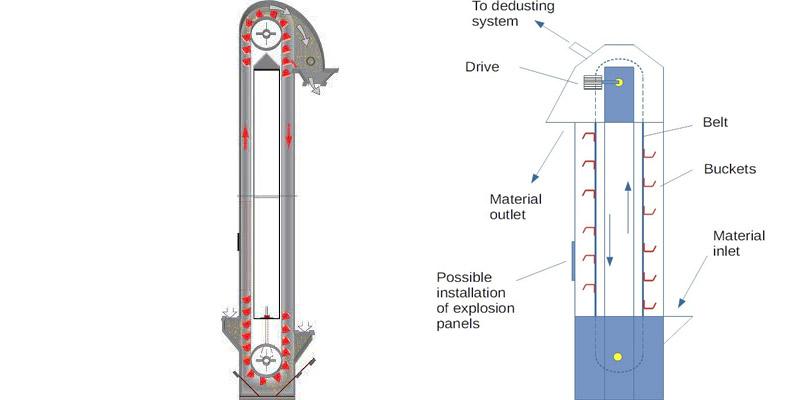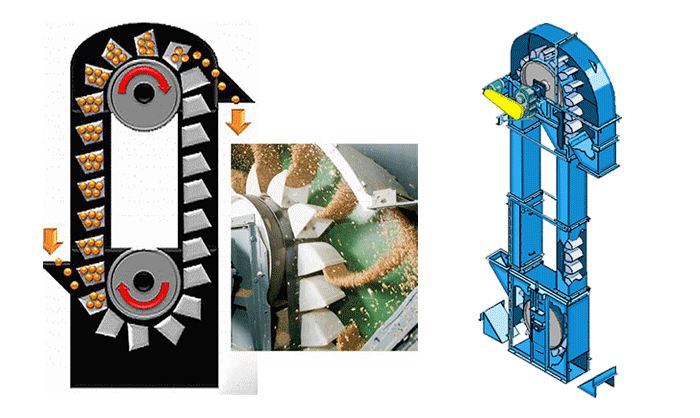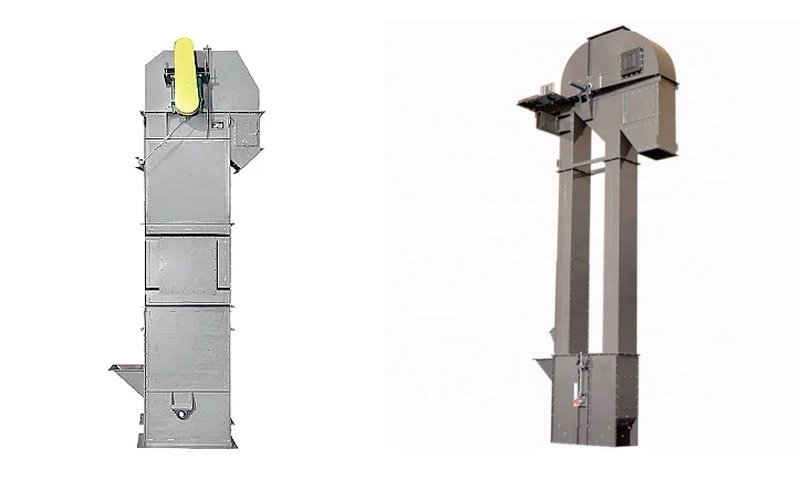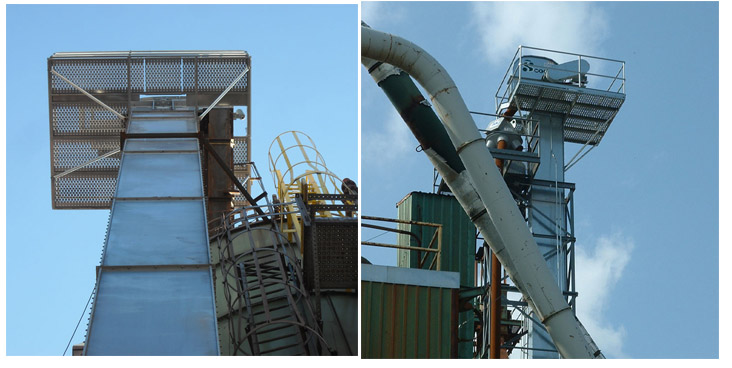How does a chain bucket elevator work?
Tuesday March-25 2025 14:34:04
A chain bucket elevator is a mechanical device used to vertically or near-vertically transport bulk materials (e.g., grains, coal, minerals, or aggregates) using a series of buckets attached to a rotating chain. Here’s a detailed breakdown of its working principle, components, and process:
1. Key Components
Buckets: Metal or plastic containers attached to the chain to carry materials.
Chains: Dual chains (or single chain in lightweight designs) that drive the buckets.
Head Section (Top): Houses the drive sprocket and motor, where materials are discharged.
Boot Section (Bottom): Contains the tail sprocket and loading zone for material intake.
Casing/Enclosure: Encloses the entire system to prevent dust and spillage.

2. Working Process

Step 1: Material Loading
Intake at the Boot: Material is fed into the elevator’s boot (bottom section) through a hopper or conveyor.
Bucket Filling: As the chain moves upward, buckets scoop or are gravity-fed with material
Step 2: Vertical Transport
Chain-Driven Movement: The motor powers the drive sprocket, rotating the chain and lifting buckets vertically.
Stable Carrying: Buckets remain upright during ascent, preventing material spillage.
Step 3: Material Discharge
Centrifugal or Gravitational Discharge:
Centrifugal Discharge (High-speed): At the top, buckets pass over the head sprocket, and centrifugal force flings material out through a discharge chute.
Gravitational Discharge (Low-speed): Buckets tip or invert, allowing material to fall out by gravity.
Step 4: Return Cycle
Empty Buckets Descend: After unloading, empty buckets travel back down the return side of the casing to repeat the cycle.
3. Types of Chain Bucket Elevators

Centrifugal Discharge Elevators:
Speed: 1–4 m/s.
Use: Ideal for fine, free-flowing materials (e.g., grains, cement).
Continuous Discharge Elevators:
Speed: <1 m/s.
Use: Suitable for fragile, abrasive, or sticky materials (e.g., coal, wet clay).
4. Advantages
High Capacity: Handles up to 1,000 tons/hour, depending on bucket size and speed.
Vertical Efficiency: Compact footprint for tall vertical lifts (up to 60 meters)
Durability: Chains and buckets withstand heavy loads and harsh environments.
5. Common Applications
Agriculture: Transporting grains, seeds, or feed.
Mining/Cement: Moving coal, limestone, or clinker.
Chemical Industry: Handling powders, granules, or pellets.

6. Critical Design Considerations
Material Properties: Density, abrasiveness, and moisture content dictate bucket shape and chain strength.
Discharge Method: Centrifugal vs. gravitational depends on material fragility and flowability.
Safety Features: Include explosion-proof motors for combustible dust or anti-backflow designs.
Example Workflow (Grain Elevator)
Loading: Wheat is fed into the boot via a conveyor.
Lifting: Buckets carry wheat upward at 2.5 m/s.
Discharge: Centrifugal force at the head sprocket throws wheat into a storage silo.
Return: Empty buckets descend to reload.
Why Choose a Chain Bucket Elevator Over Belt-Driven?
Heavy-Duty: Chains handle heavier loads and higher temperatures.
Precision: Better for abrasive materials that might damage belts.
This system balances efficiency, reliability, and versatility, making it a staple in industries requiring vertical bulk material transport.
